Submitted by WA Contents
Polish Pavilion reveals wooden matrix installation with terracotta pots at Triennale Milano 2022
Italy Architecture News - Jul 19, 2022 - 16:43 2528 views
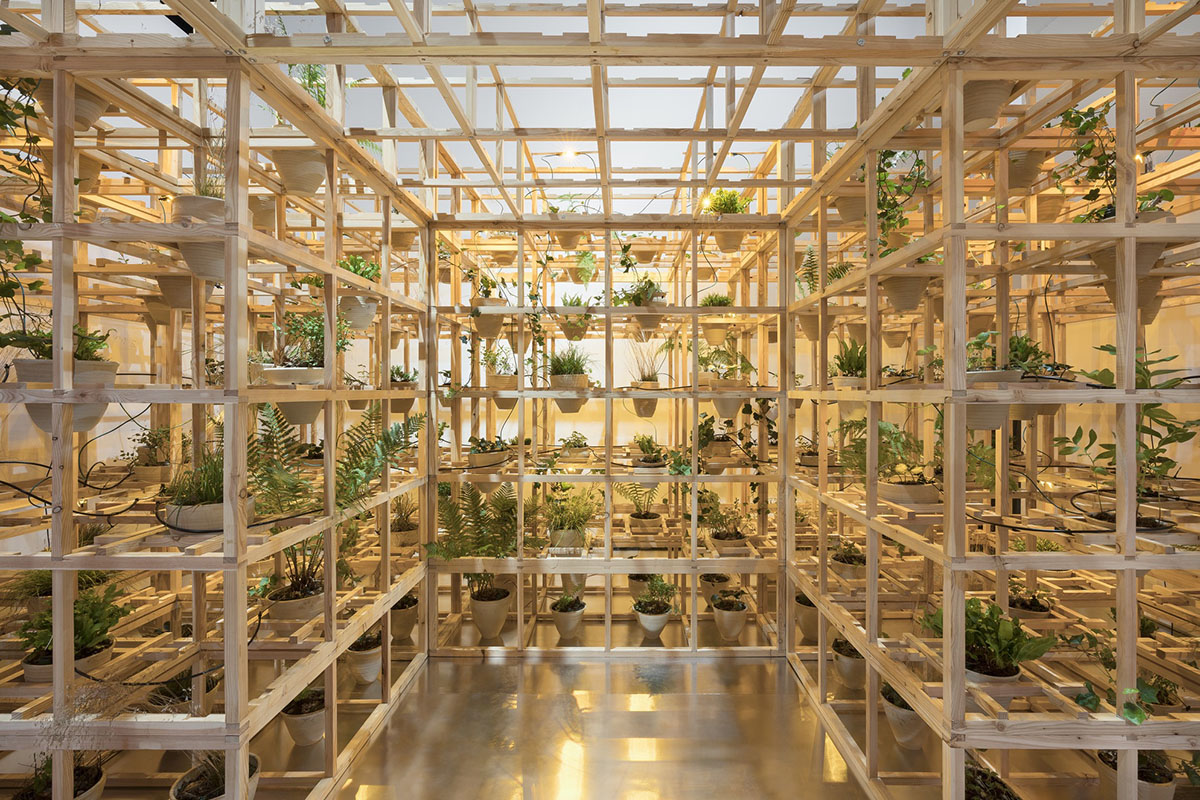
The Polish Pavilion has presented a wooden matrix installation at this year's 23rd Triennale Milano International Exhibition, deciphering the silent language of plants in a futuristic greenhouse.
The installation, called Greenhouse Silent Disco, is showcased at the Triennale Milano 2022 in Viale Alemagna 6, Milan and designed by Barbara Nawrocka and Dominika Wilczyńska of the architecture firm Miastopracownia.
Organized by the two institutions the Adam Mickiewicz Institute in cooperation with the Museum of Architecture in Wrocław, the installation explores the intelligence of plants as we move towards ecological well-being, while representing the stuck between the legacy of Romanticism and the innovations of digital technology in today's era.
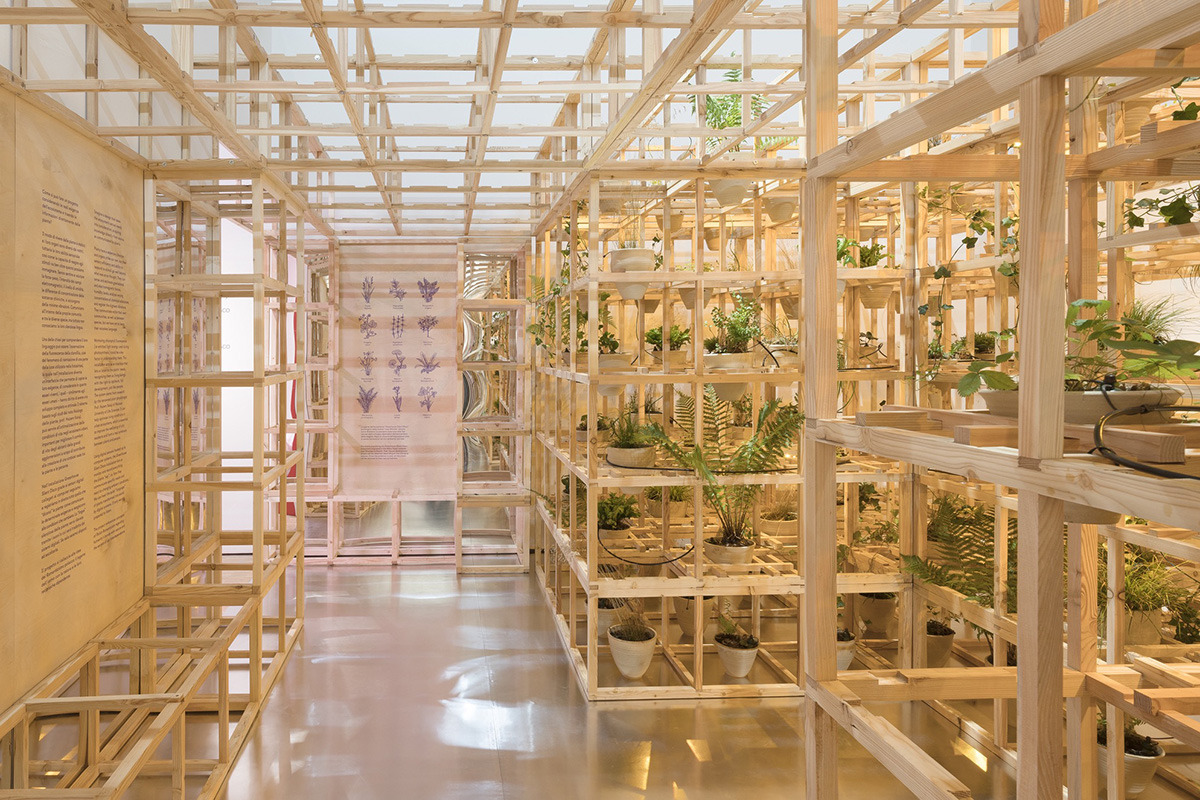
The Polish Pavilion is curated by Małgorzata Devosges-Cuber and Michał Duda, who are creators of many exhibitions and publications dedicated to design and architecture, have blended a sensual, Romantic and corporeal approach to nature with the possibilities of modern technology.
The 23rd International Exhibition is themed as "Unknown Unknowns. An Introduction to Mysteries," inviting visitors to search the realm of things we do not yet know we don’t know, exploring the unfamiliar to turn our ideas of the world upside down and open new horizons of sustainability.
In response to the theme, the Polish Pavilion joins the expedition by going beyond preconceived ideas of plants as static and passive organisms.
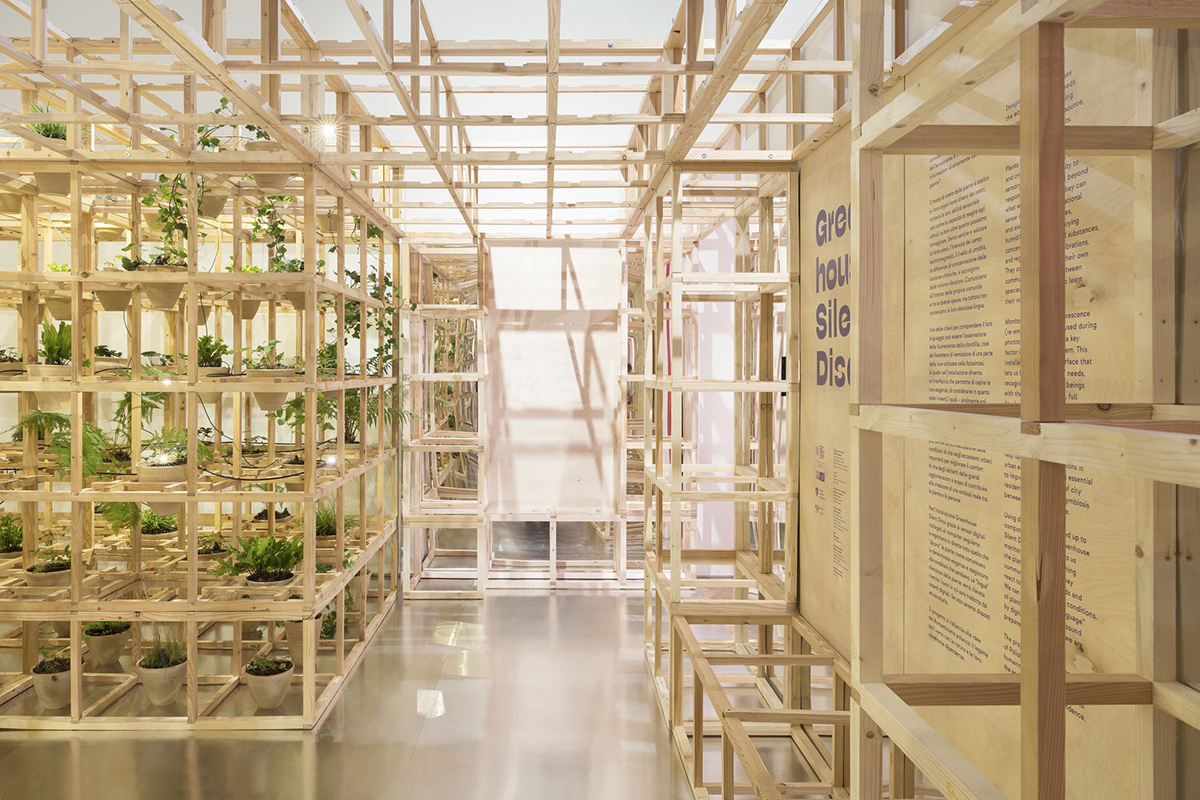
Greenhouse Silent Disco is designed to decipher the silent language of arboreal vegetation, making contact with the parallel intelligence of this complex and mysterious world.
The installation triggers some important questions: Have we ever stopped to wonder what plants have to say to us? Or what they need? What input can they give us, to help us rethink the ecosystem for the benefit of the plant kingdom as well as our own?.
Described as "a greenhouse of the future", the wooden matrix is filled with lush vegetation and equipped with digital sensors that capture the reactions of the plants to various stimuli, including the presence of the humans who pass through the installation and the changing of the weather outside.
These reactions are transformed into LED lights and sounds.
At the heart of the project is research by plant physiologist Hazem Kalaji, professor in the department of Agriculture and Biology at the Warsaw University of Life Sciences, and his #iPlant system.
Within the installation, plants communicate with the system through the excess light they receive that they do not use in photosynthesis, a phenomenon referred to as chlorophyll fluorescence. "This makes it possible to determine their needs according to human-centric parameters that we can grasp and interpret," the team stated.
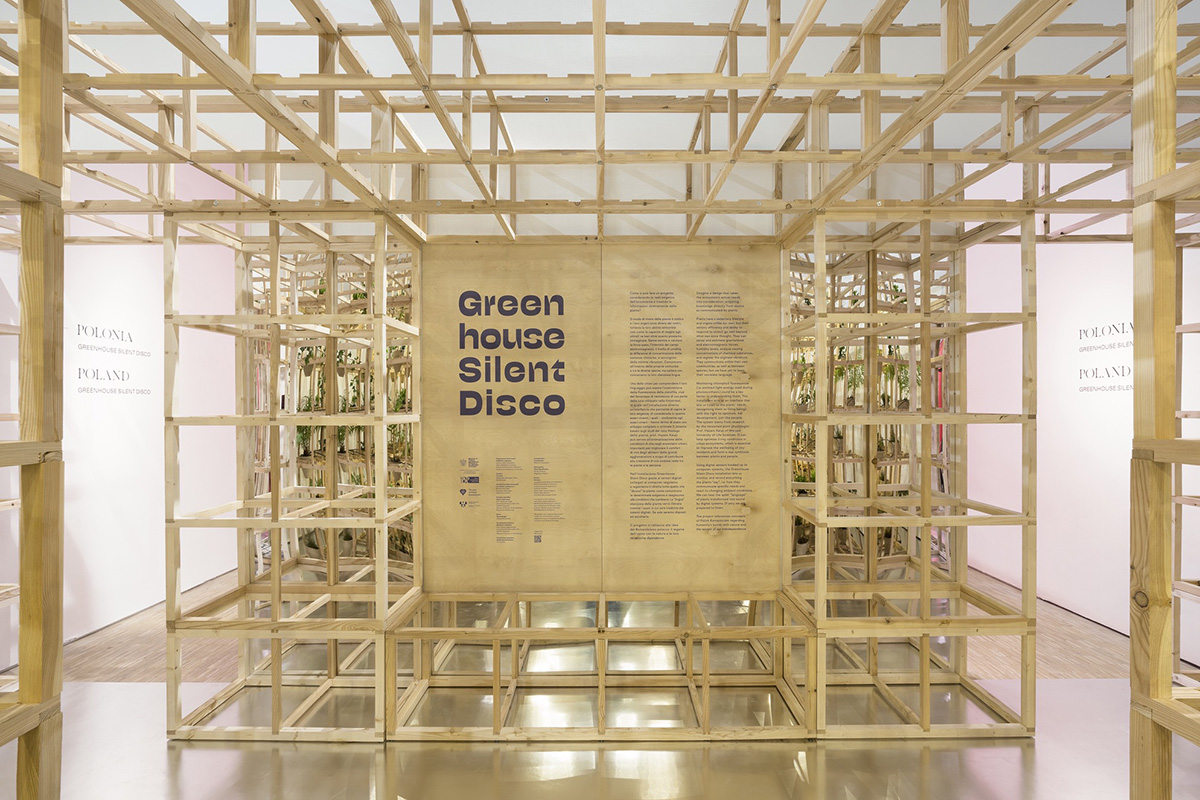
"The greenhouse of the future is like a disco. The LED lights vary from blue to red and white depending on the plants’ needs," said professor Hazem Kalaji.
"For example, they change color if it is cloudy or raining outside the greenhouse," explained professor Hazem Kalaji, who curated and supervised the scientific aspect of the exposition.
The graphic design of the installation was designed by Warsaw-based new media designer Nicola Cholewa in cooperation with graphic designer and publisher Magdalena Heliasz.
The design of the wooden structure is inspired by natural fractals. The plants, kept in handmade artisanal terracotta pots, are multiplied into infinity by the reflective glass walls.
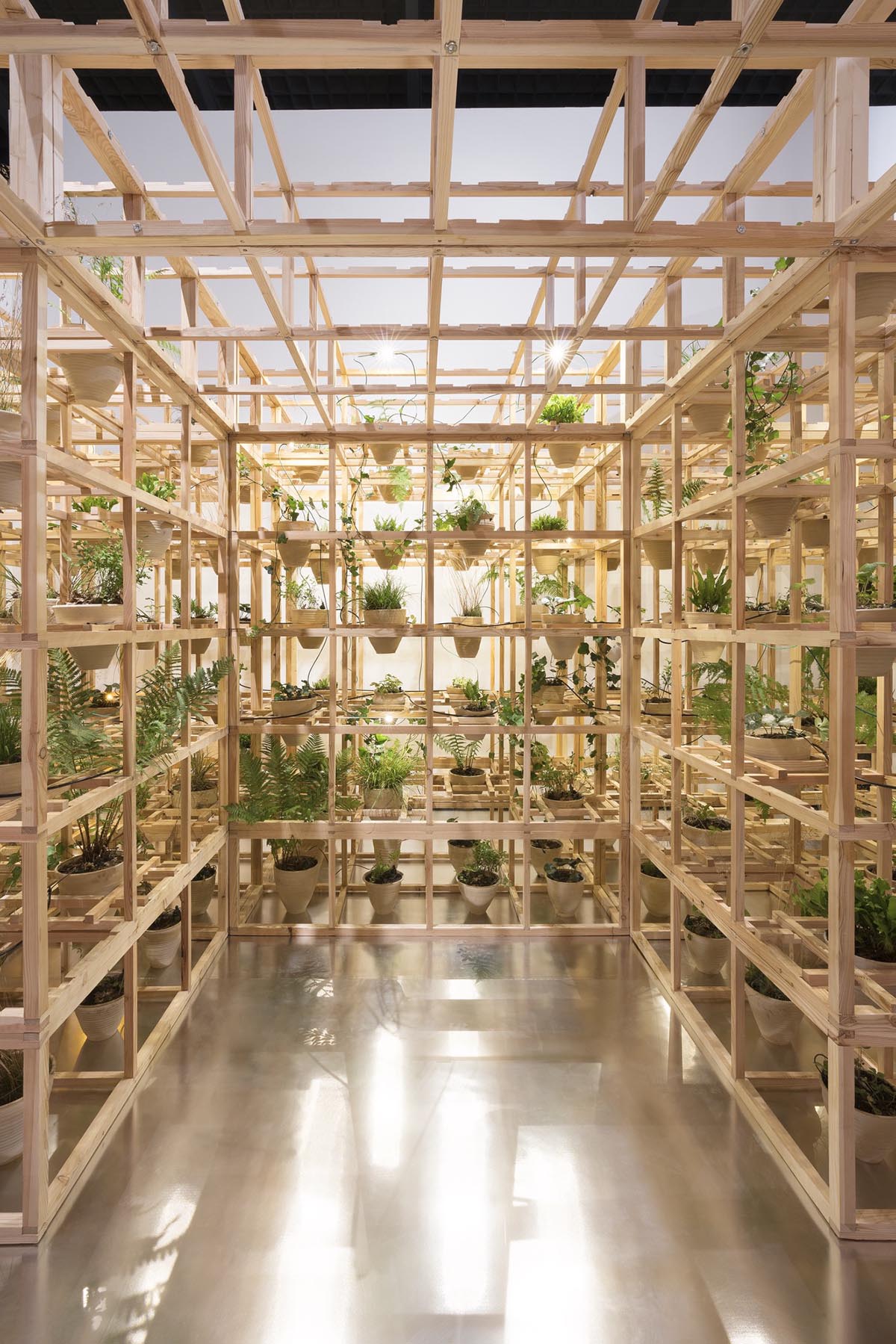
An immersive atmosphere where guests find themselves completely enveloped in the plant life around them, along with their “conversation” in light and sound.
A living and ever-changing installation that refutes any image of nature as perfect and immobile, instead revealing its constant flux through the growth of plants and the turning of the seasons between July and December, the period of the 23rd International Exhibition.
"An intense and profound relationship develops between the visitors and the plants in a clear evocation of Romanticism, the philosophical and literary matrix of the project," stated the team.
In fact, the installation is being presented during the Year of Polish Romanticism, full of events celebrating the great poet and writer Adam Mickiewicz on the 200th anniversary of the publication of his “Ballads and Romances”.
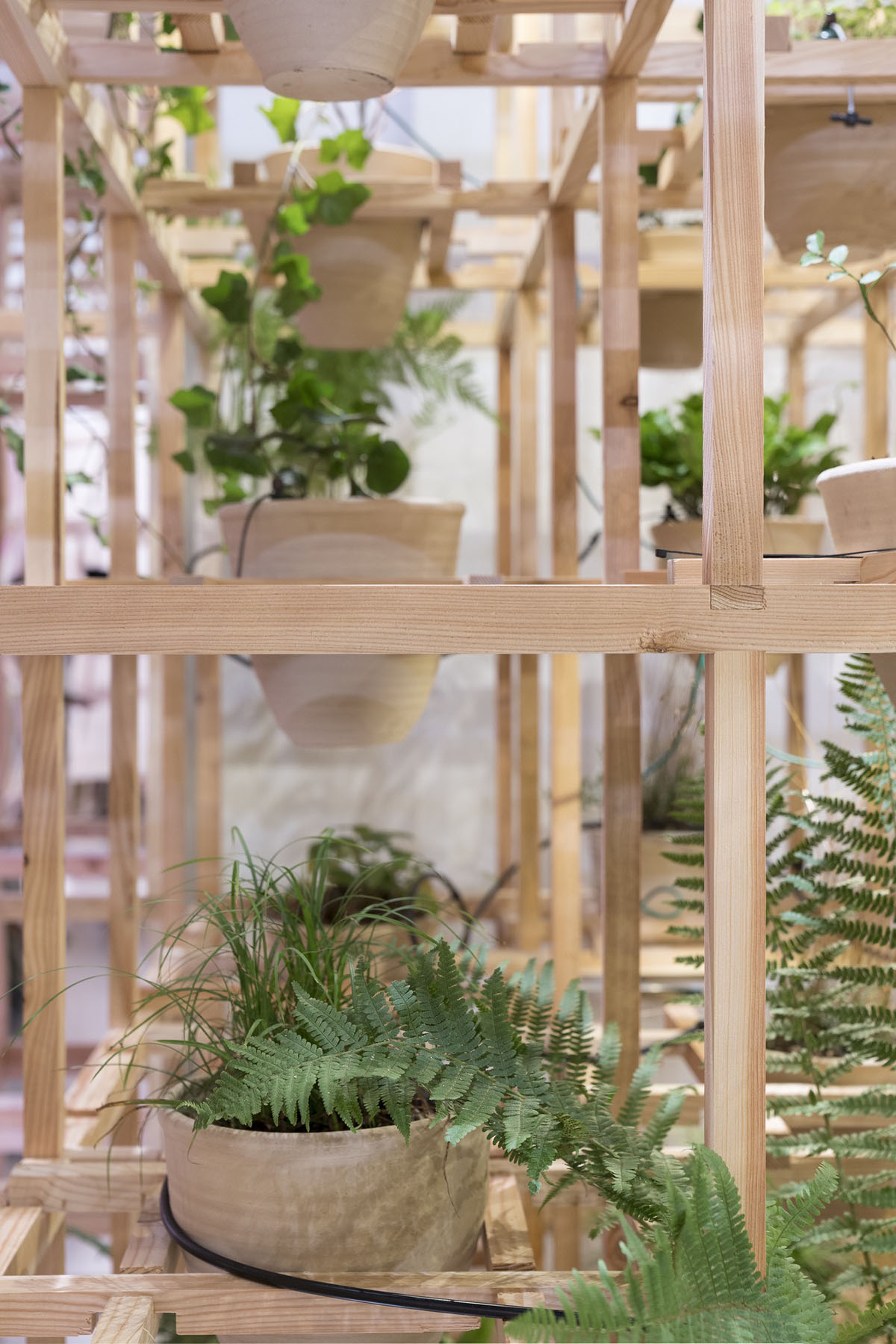
"It is with Romanticism that nature transcends a purely illustrative role and becomes an instrument of knowledge. Man becomes part of Nature, and nature itself becomes a way to know the world," said Michał Duda, deputy director for programming at the Museum of Architecture in Wrocław.
"The Romantics believed that only in nature could man truly be himself. So the starting point is to ask if we can draw on the wisdom of plants to inform our designs. And the answer is yes," Duda added.

The Polish Pavilion curators Małgorzata Devosges-Cuber, Michał Duda
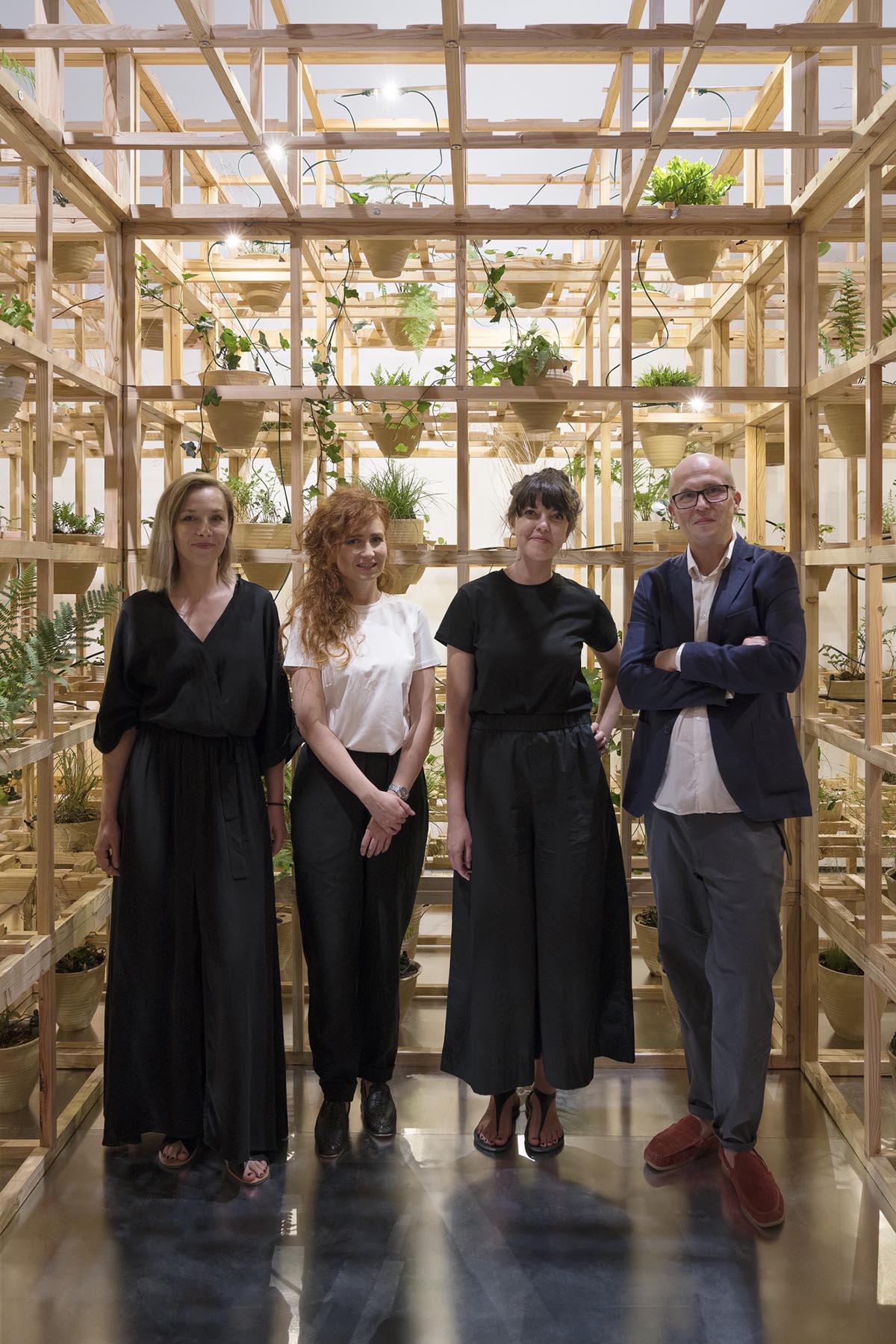
The Polish Pavilion curators and designers Małgorzata Devosges-Cuber, Barbara Nawrocka, Dominika Wilczyńska, Michał Duda
"The sensory abilities of plant organisms go far beyond what we can imagine," as the team noted. Plants have the ability to feel and assess the force of gravity, sense the intensity of electromagnetic fields and the level of humidity, notice even the slightest vibrations, and communicate within their community and between different species. It is up to us to choose to listen to them.
Project facts
Organising institutions: Adam Mickiewicz Institute, Architecture Museum in Wrocław
Curators: Małgorzata Devosges-Cuber, Michał Duda
Exhibition design: Barbara Nawrocka, Dominika Wilczyńska [Miastopracownia] / Under the expert’s supervision of Hazem Kalaji
Botanical consultations: Urszula Zajączkowska
Sound: Justyna Stasiowska
Visual identification: Nicola Cholewa, Magdalena Heliasz
Partners
Academy of Fine Arts in Wroclaw,
State Forests -
Milicz Forest District
All images © Paolo Riolzi
> via Polish Pavilion
